Some Amazon sellers just seem to have a knack for picking the perfect products to sell, no matter the season. They seem to always be in the right place at the right time, capitalizing on the latest trends and consumer demands. Ever wondered how?
Whether you’re an experienced Amazon seller or a newbie looking to make your mark, capitalizing on seasonal product trends could transform how you look at your Amazon FBA business.
In this article, we’ll share our tips on spotting and selling seasonal products on Amazon.
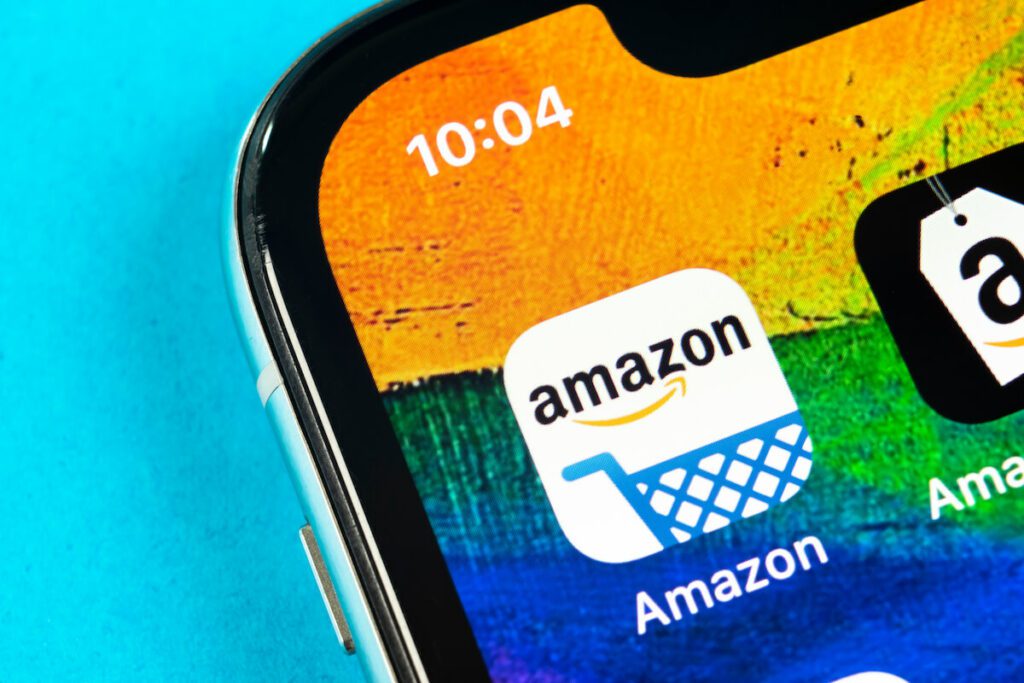
What is a Seasonal Product?
Seasonal products are typically in high demand during certain periods of the year. Think of Christmas decorations in December or beach toys in the summer.
During the ‘in season’ period, these products can sell like hotcakes, potentially bringing in a significant chunk of change.
But, as with all good things, this period of high demand must come to an end. Once their season is over, these products typically see little to no sales.
But don’t let that deter you. With the right approach that doesn’t leave you stuck with mountains of unsold stock for the rest of the year, selling seasonal products can be very lucrative.
Examples of Seasonal Products
It’s often quite intuitive to determine if a product is seasonal, but there are some curveballs that you wouldn’t expect. So, making a seasonality check part of your Amazon product research is essential.
Let’s take a look at each season and the types of products that typically sell well during those times.
Winter
The season of snow, hot chocolate, and holiday cheer. Here are a few examples of seasonal products that peak during winter:
- Warm clothing: Think coats, thermals, and anything else that can keep you cozy during the cold winter months
- Christmas decorations: From Christmas trees to wrapping paper, these items are in high demand during the holiday season. Just look at the Google Trends data for the past 12 months below
- Winter sports equipment: Skis, snowboards, and ice skates are just a few examples of the types of equipment that sell well during this time
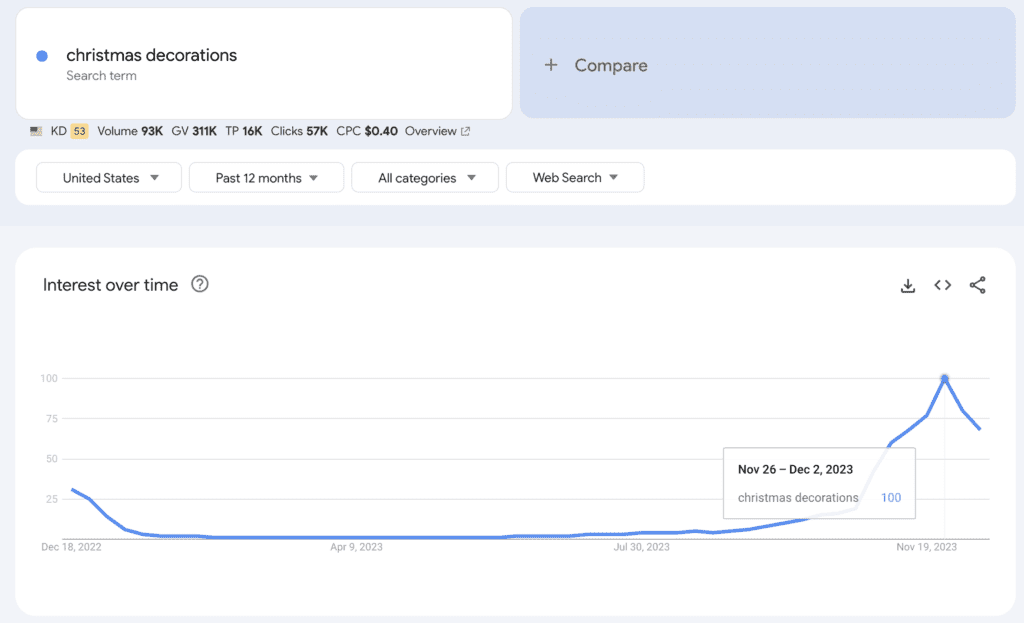
Spring
As the weather starts to warm up, we tend to spend more time outdoors. Here are a few examples:
- Gardening equipment: Flower pots, tools, and other gardening supplies are popular during the spring months – take a look at the Google Trends for ‘plant pots’ below
- Outdoor furniture: As people start to spend more time outside, items like patio sets and outdoor grills often see a spike in sales
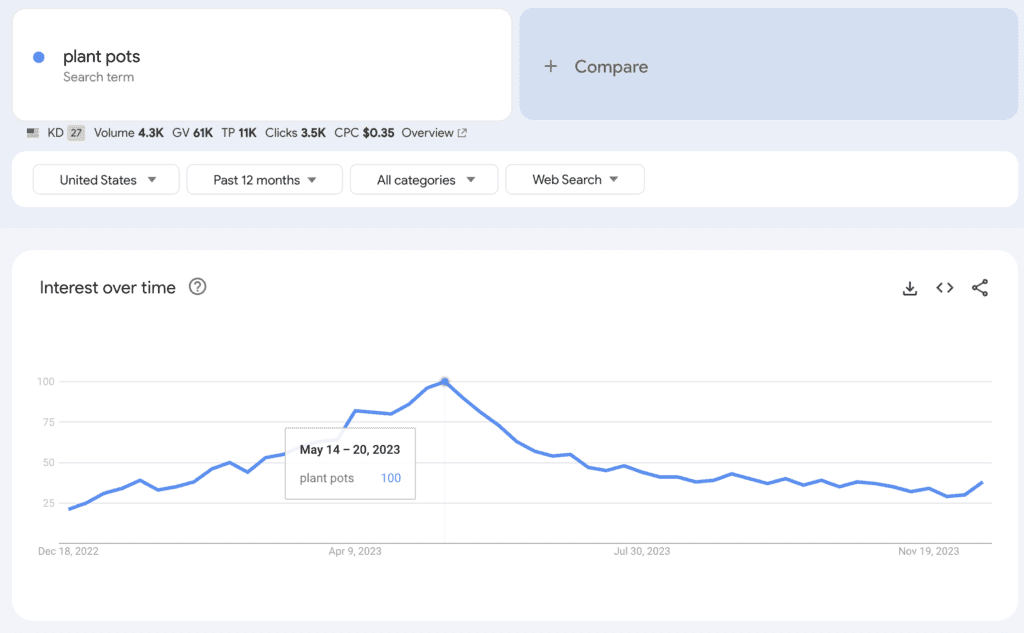
Summer
Summer is all about sunshine, beach trips, and outdoor activities. Here are a few examples:
- Sunglasses: A summer staple, sunglasses are always in high demand during the sunny months
- Swimwear: From bikinis to board shorts, swimwear is a must-have for summer
- Beach toys: Sandcastle kits, beach balls, and other beach toys are popular items during the summer months
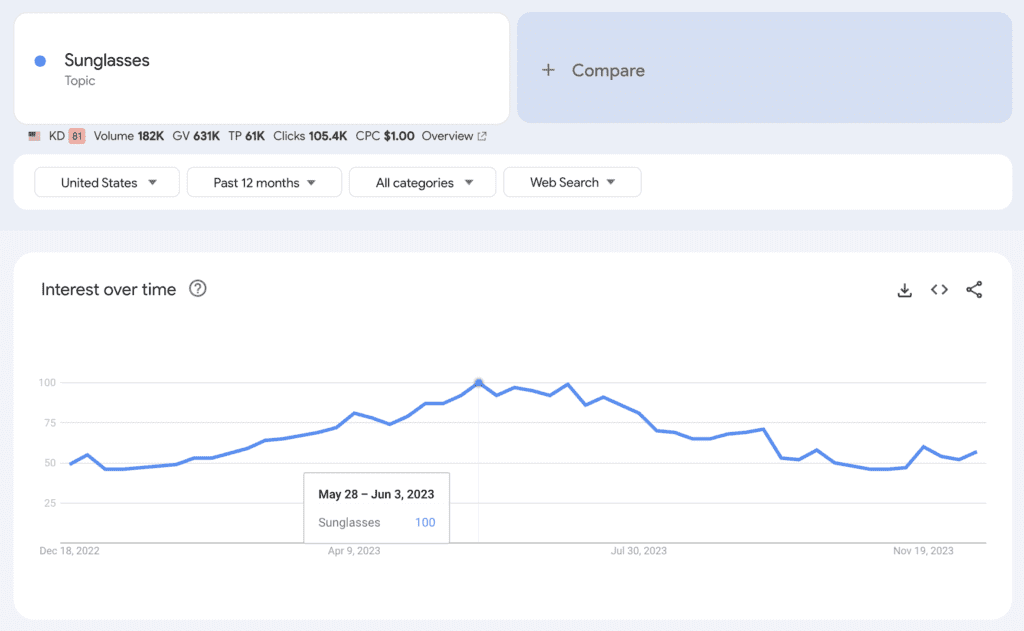
Fall
Fall is a time of change. The leaves start to fall, kids go back to school, and Halloween is just around the corner. Here are a few examples of fall products:
- Back-to-school supplies: From backpacks to school supplies, these items are in high demand during this season
- Halloween-related items: Costumes, decorations, and candy are all popular items during the Halloween season
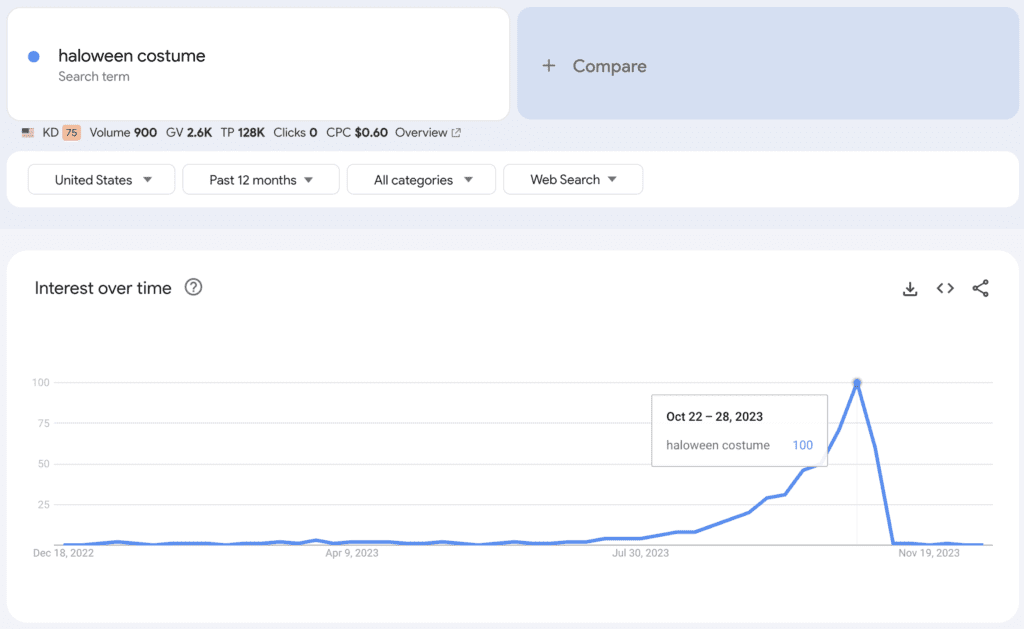
By understanding the types of products that sell well during each season, you can better plan your inventory and maximize your sales. Remember, the key to successfully selling seasonal products on Amazon is to stay ahead of the curve and anticipate what your customers will need so you can plan your inventory accordingly.
How to Determine if a Product is Seasonal
But what about those curveballs we mentioned earlier? You might expect some items to be in demand all year round, when in fact they’re entirely seasonal. Some products are obvious, but others, like candles for example, aren’t so clear-cut.
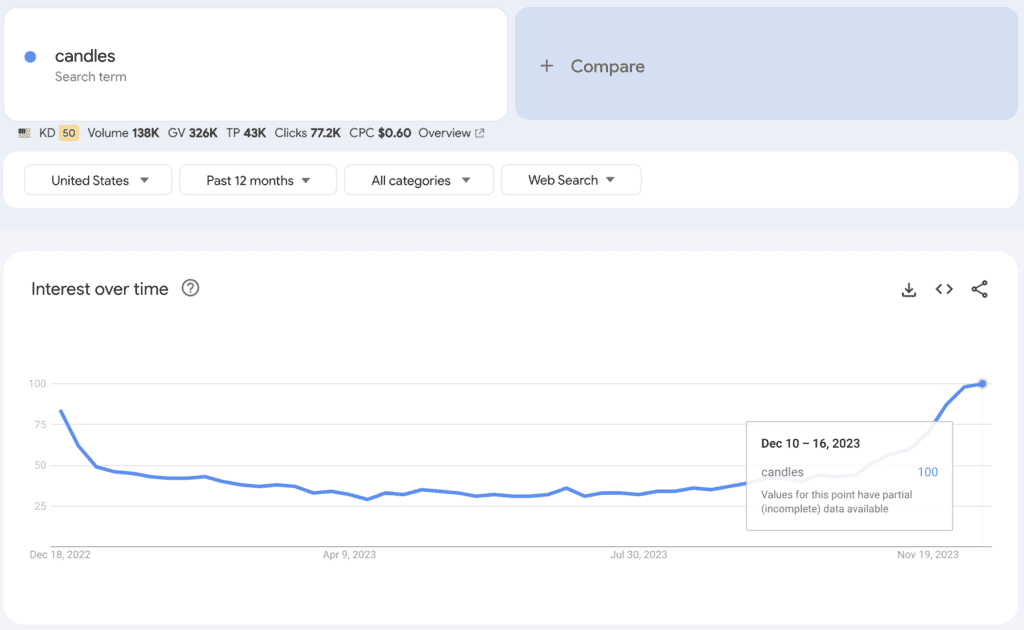

Yes, people use candles year-round, but sales typically spike during the colder months.
Take backpacks as another example. People use them for work and school, they go on winter trips, and they plan for their summer vacations back in February, right?
In actual fact, demand for backpacks consistently peaks in July/August every year. Knowing this means that as a backpack seller on Amazon, you can prepare your inventory and plan effective Pay-Per-Click (PPC) campaigns to capture these seasonal demand peaks.
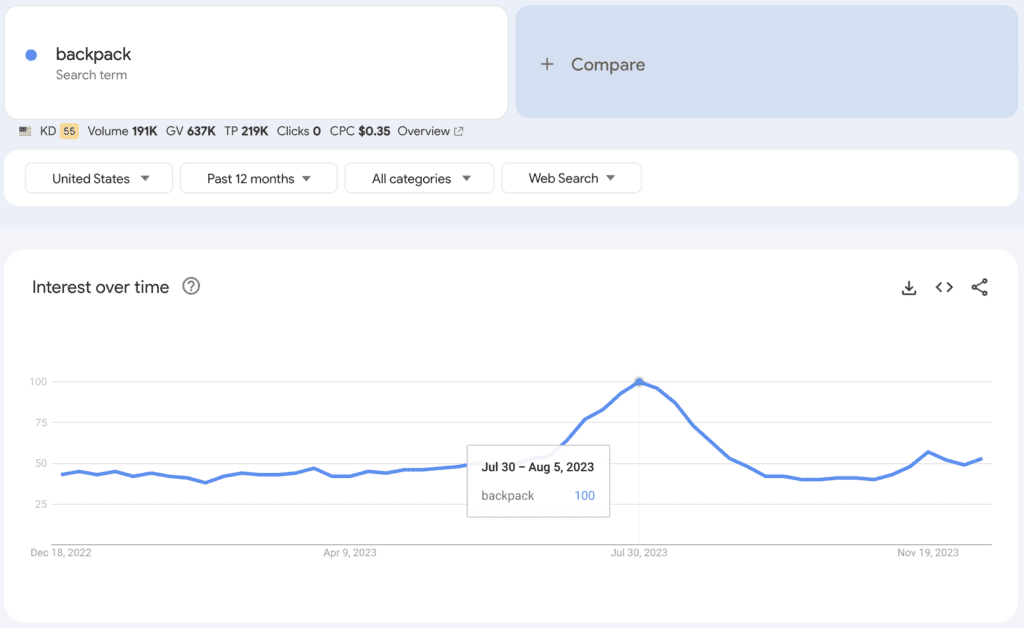

So, how can you tell if a product is seasonal? Let’s explore.
Use Google Trends
One of the quickest, cheapest, and most effective ways to determine if a product is seasonal is to use Google Trends. Here’s how:
- Enter the name of the product you’re planning on selling into the search bar.
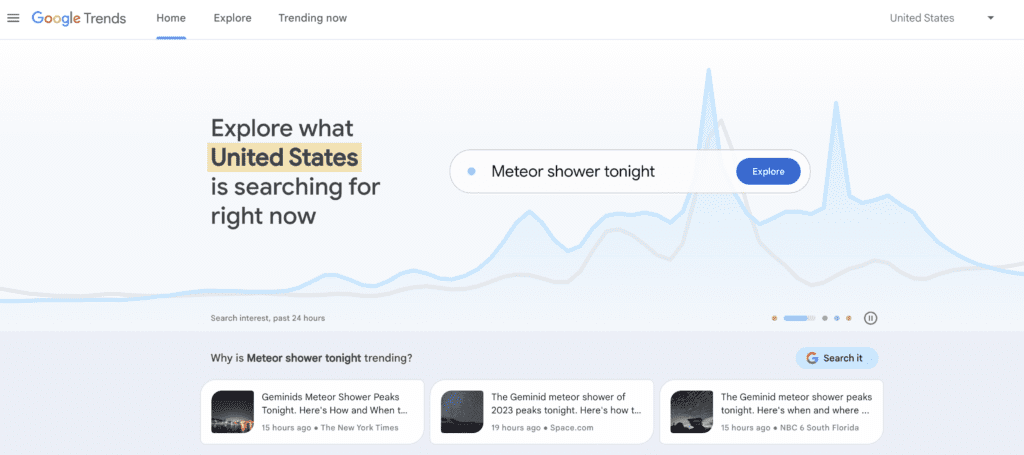

- Change the period to the past 12 months at a minimum. For more accurate results, look at the past 5 years – or as far back as the data goes.
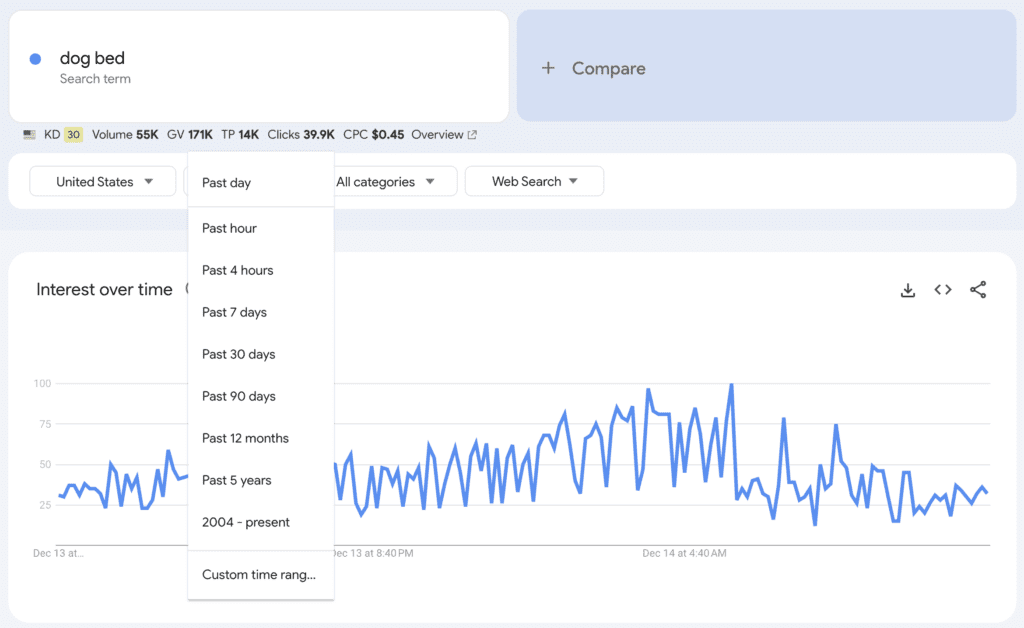

- If you’re planning to sell outside of the United States, be sure to check the seasonality in any other country you’ll be selling in as well.
What you’re looking for is a consistent pattern of peaks and troughs at the same time each year. This indicates that the product is in high demand during certain periods, making it a seasonal product.
Remember, this isn’t an exact science. Google Trends works on a percentile basis. The chart hits 100% at the time when the term was most popular in comparison to the rest of the chart. This doesn’t necessarily mean it’s a popular term in general.
The data also only covers search volume, not sales. However, the more people are searching for a product, the more likely it is that sales are higher during that period.
SmartScout
For more accurate estimations of actual sales, consider using a paid service like SmartScout.
SmartScout can provide more detailed insights into sales trends and seasonality to help you make more informed decisions about which products to sell on Amazon. Here’s how:
- Head over to SmartScout
- Navigate to ‘Popping Topics’
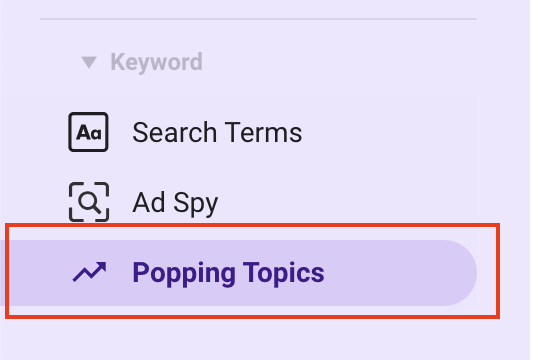

- Enter your keyword in the search bar
- Change to “1 Year”
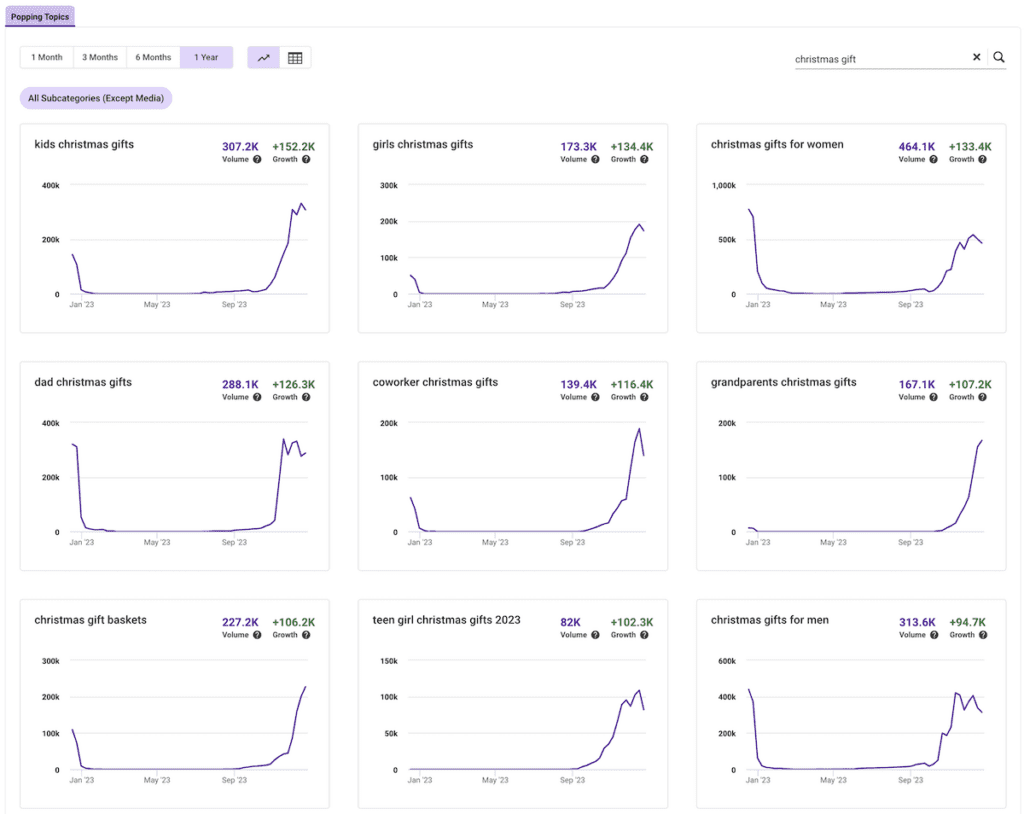

By understanding the seasonality of your products, you can better plan your inventory, optimize your PPC and other marketing campaigns – and ultimately increase your sales.
So, do your research and set your Amazon business up for success.
Tips for Selling Seasonal Products on Amazon
Selling seasonal products on Amazon can be lucrative if you know how to navigate the ebb and flow of demand. Here are some tips to help you maximize your profits and manage the challenges that come with selling seasonal items.
Start Selling Ahead of Peak Season
The early bird gets the worm, and this is especially true when it comes to selling seasonal products. Many consumers like to prepare for the upcoming season well in advance, and if you start marketing your products before your competitors do, you can take advantage of this early demand.
Just look at when the uptick in searches begins for the term “Halloween costumes” – all the way back in July:



Not only does this strategy allow you to make some early profits, but it also gives you a chance to run cheaper PPC campaigns before the season ramps up. Plus, even if consumers aren’t ready to buy just yet, they may start browsing for ideas.
If your products are already out there, you’ll be top of mind when they’re ready to make a purchase.
Sell Seasonal Products Across Different Seasons
Selling a seasonal product on Amazon can result in fluctuating sales, revenue, and profit throughout the year. This can be challenging to manage and budget for, but there’s a simple solution: diversify your product range.
By selling multiple seasonal products that correspond to different seasons, you can ensure a steadier rate of income throughout the year. This reduces your risk and helps you avoid leaving all your eggs in one basket.
“The best sellers focus on selling on-brand seasonal products across different seasons. For example, a sports and outdoors brand would sell sleds in winter, Slip n Slides in summer etc. That’s how they make the most – and steadiest – profit.”
– Alex Champagne, Amazon M&A expert
Take Advantage of International Selling


Amazon’s global selling infrastructure makes it easy to expand into other markets around the world.
Where a product may be ‘off-season’ in one country, it may be ‘in-season’ in another. For example, when it’s winter in the USA, it’s summer in Australia. So, if you’re selling a product that’s popular in warm weather, why not consider selling elsewhere during the US winter?
Check out our full article on Amazon Global Selling for more information.
Supplement with an Evergreen Product
Evergreen products are items that sell well all year round. You can think of these products as your ‘bread and butter’, while your seasonal products can be your ‘supplementary bonus’.
This strategy can provide a solid boost to your income and a huge reduction in risk across the year.
Choose Pay-As-You-Sell Insurance
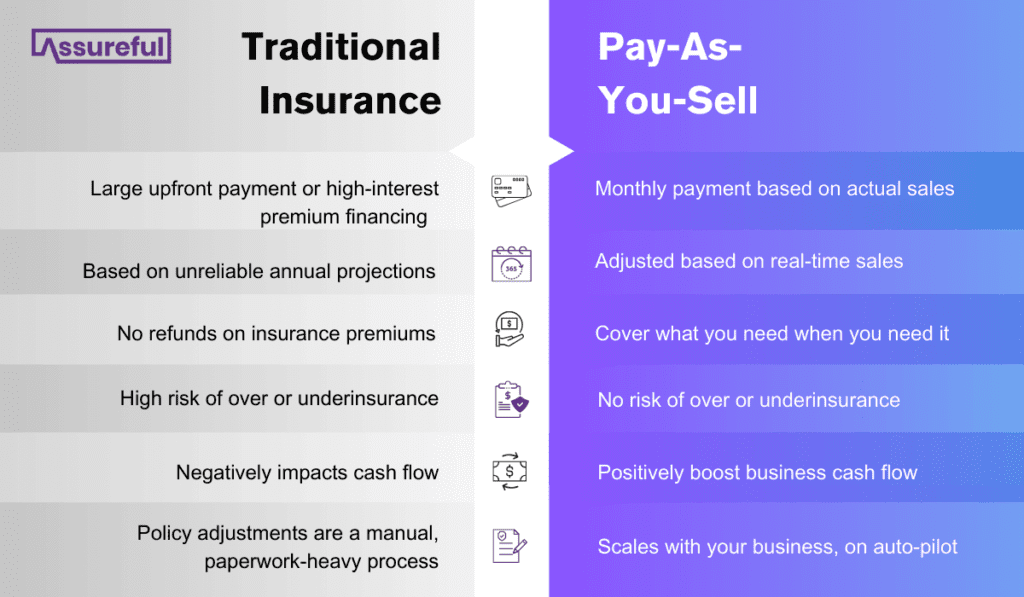

Traditional insurance models require you to estimate your annual revenue before they can give you a quote. But how can you do that accurately if you’re selling a product that only sells for a few months of the year?
That’s where pay-as-you-sell insurance (PAYS) comes in. With PAYS insurance, your premium is based on the quantity of products your business sold in the previous month. This means you only pay for the level of coverage you need when you need it. There’s no risk of over or underinsurance.
Selling seasonal products on Amazon can be a great way to boost your eCommerce business. With these tips and the right insurance coverage, you can navigate the challenges and reap the rewards of this exciting venture.
Remember, Assureful is here to help you with all your eCommerce insurance needs. Find out more about our pay-as-you-sell insurance and how it can benefit your business.
No obligation quote.
Policies can be canceled at any time, with 30 days’ notice.
For more Amazon tips, check out our articles on:
- Amazon seller insurance guide
- Amazon COI – what is it and how do I upload it
- How to renew your Amazon FBA insurance and get the best quote
- Amazon FBA cashflow strategies
- How to add a variation to an existing product
- Calculating Amazon FBA profit accurately
- Amazon Brand Registry Guide – protect and scale your business
- How to Make an Amazon Storefront
- How to get Amazon Seller Badges




0 Comments